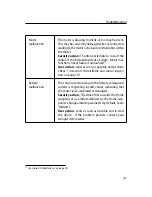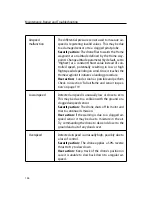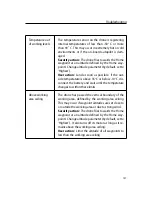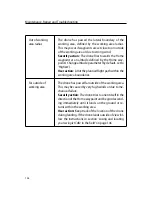
Maintenance and repair of the
swinglet CAM
The air speed sensor is connected to the pitot probe by a pair of tubes. To check
it, follow these steps:
1. Visually check the pitot probe. Make sure that it is properly fixed to the air-
frame( and that both tubes are properly attached and not damaged). The
holes in the probe must be clear and free of dirt or other small obstructions.
2. Switch the drone on by connecting the battery and connect to
eMotion
.
3. Gently blow into the front opening of the pitot tube from a distance of
around 5 cm. The airflow direction should match the natural flow expe-
rienced in flight.
4. Check the air speed displayed on the vertical bar left of the artificial horizon.
At rest, the displayed air speed should be close to zero (it may drift up to about
2 m/s). When blowing in the pitot probe there should be an air speed indicated in
the ‘Flight Monitoring’ tab of
eMotion
that should easily reach values above 8 m/s.
7.4
Repairing the
swinglet CAM
airframe
Small repairs of cracks in the airframe can be done using contact glue such as
UHU® POR glue. Take care to use only contact glues that are specifically designed
for Expanded Polypropylene (EPP). If you have doubts about the extent of the
damage, always contact your
swinglet CAM
reseller to verify if the damage can
be easily repaired by yourself or if you need to send your drone in for repair to.
Caution:
Never fly your
swinglet CAM
if it has cracks in the airframe.
7.5
Proper battery care
Proper care of your
swinglet CAM
’s battery is important to prevent damage to your
drone and to maximize flight time. With a fully charged battery, the drone will fly
for about 30 minutes. Frequent altitude changes, presence of wind, use of old
123
Summary of Contents for swinglet
Page 1: ...Extended User Manual swinglet CAM Revision 12 September 2014 Copyright 2010 2014 senseFly Ltd...
Page 13: ...6 5 Charging the remote control 112...
Page 48: ......
Page 49: ...Part II Advanced functionalities...
Page 114: ......
Page 115: ...Part III Maintenance Repair and Troubleshooting...
Page 148: ......
Page 149: ...Part IV Speci cations...
Page 154: ......











































